Every auto upholstery shop can benefit from having a clean and organized workspace.
It’ll improve productivity, quality, team morale, safety and even customer satisfaction. All of which have a direct and significant impact on a shop’s bottom line.
But with trimmers working long hours, it can be difficult finding time to clean house. And even if time is made, some trimmers may not even know where to start.
I suggest the 5S Principle, a method invented in Japan and used throughout many industries to optimize workspaces. I’ve experienced the benefits firsthand after employing the 5S Principle in my own shop, Sewn Tight Custom Interiors.
The 5′ refer to the five dimensions of workplace optimization:
1. Sort (Seiri)
The first step is to clear out clutter, old inventory, items not used, and broken tools and equipment.
We all like to hang onto things we may need one day. But if we’re not careful, our shops can become overrun with items we never use.
Take time to sort through your business’ belongings and set aside anything that’s not necessary for near-term work or profitability. Basically, anything you don’t use on a weekly or monthly basis shouldn’t be in your shop. It’s these items that you’ll sell, donate or throw away.
For example, with online and mail orders arriving so quickly, there’s no longer any reason to maintain a large inventory of materials and supplies. Most shops can get by with ordering just what they need for a job. Of course, there are exceptions for rare or special-order items. But these can always be organized and stored on hanging shelves that free up floor space.
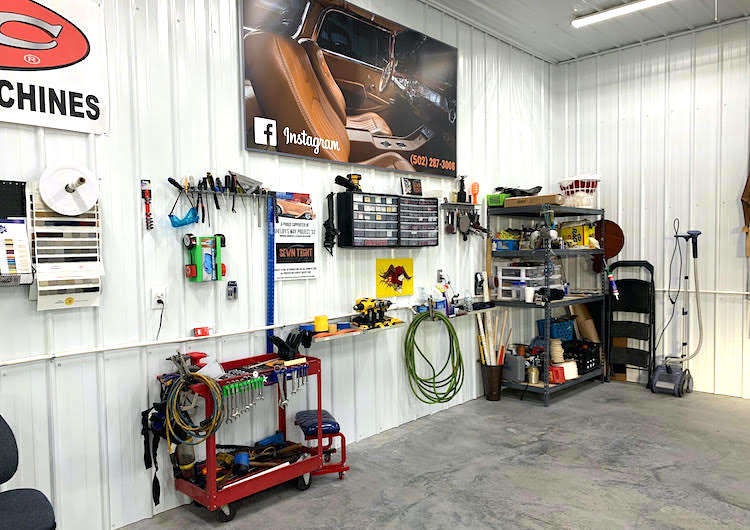
2. Set In Order (Seiton)
The second step is to organize those items that you will keep so that they’re exactly where you need them.
This step refers to everything you need to run a successful shop — including fabric inventory, supplies, tools and large equipment.
You’ll want to organize everything in a manner that allows you to maximize efficiency and frees space in your workroom. For example, you may decide to arrange fabrics by type and color. You may also decide to hang retractable air hoses from the ceiling, so they’re not left on the floor for people to trip over.
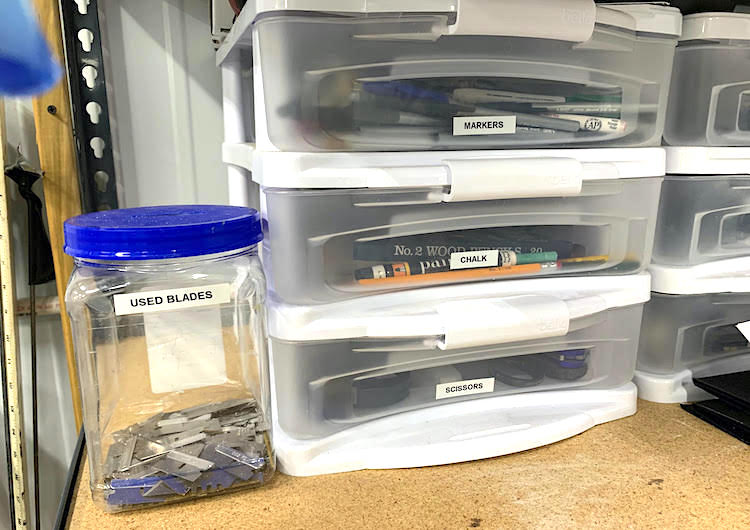
3. Shine, Clean Up (Seiso)
The third step is to clean your shop.
This isn’t a quick sweep and wipe down. Rather, it’s a deep cleaning — including floors, walls, and those hard-to-reach spots behind large equipment. Even wiping off light fixtures can brighten a workspace and provide better visibility.
If your budget allows, give your shop’s walls a fresh coat of paint and upgrade your lights. It’ll do wonders for team morale.
Lastly, don’t forget to take care of your tools and equipment. Clean and serviced machines can save you a lot of money down the road on repairs.
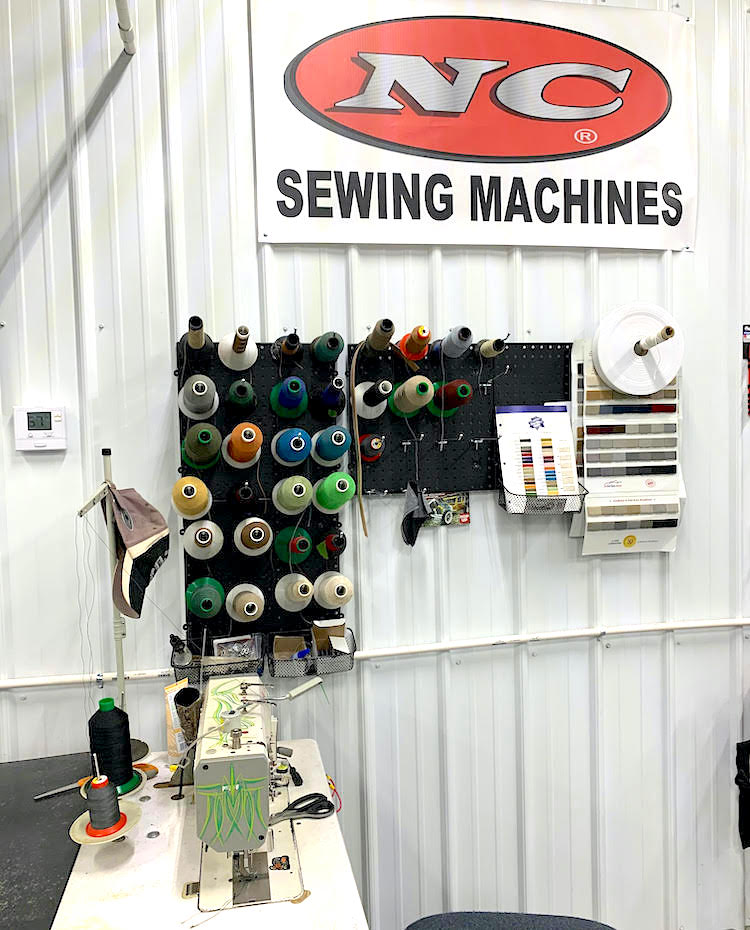
4. Standardize (Seiketsu)
The fourth step is to standardize the location of every item in your shop.
If every item has a set place, everyone in your shop will know where to find and return tools and supplies. This makes it easy to maintain your newly organized workspace and helps maximize efficiency.
For example, if your air tools are all hung in the same spot everyday, they will be easy to find. At the end of the day, you can glance over and immediately know if a tool is misplaced or lost.
What’s more, having labeled drawers or bins for screws, fasteners, drill bits, etc. makes it quick and easy to retrieve those items when needed. It also makes it easier to know when those items are low and need to be reordered.
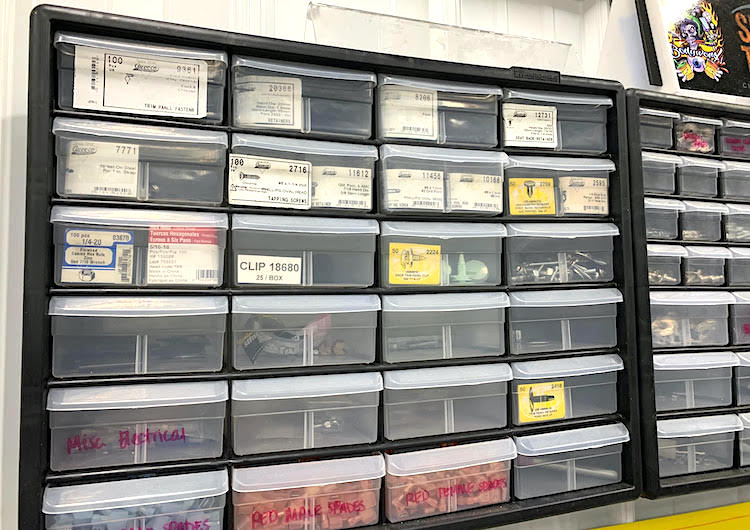
5. Sustain (Shitsuke)
The fifth and final step is to sustain your shop’s cleanliness and order.
This step is far easier than it sounds, as it takes less time to maintain an organized shop than it does to organize it from scratch.
But you must commit. Otherwise, you’ll have completed the first four steps for nothing, and will eventually have to start all over again.
How the 5S Principle can help your shop
For many auto upholstery shops, shutting down for a couple days to apply the 5S Principle can sound overwhelming. After all, time is money.
But doing so might actually be the antidote you didn’t realize your shop needs.
Every day, we find ourselves wasting valuable time looking for tools, screws or parts. We clean off one spot to tear down a seat because the last spot has become a catch-all full of tools and parts we keeps saying we’ll get to later. But for many of us, later never comes.
The quality of our work may be top notch, but when potential customers walk into a shop with tons of clutter, dim lighting or a dirty work area, it gives them pause and may even be limiting profitability. After all, it’s difficult to charge a premium price for work that looks like it’s being performed in a dump.
A thorough cleaning and reorganizing will breathe new life into your shop, and make it more efficient and productive. A less cluttered space will also appeal to customers, who will be more willing to trust you with their cars.
It’s time to take control of your business. Apply the 5S Principle and see the difference it makes.
Shane Lile is owner and operator of Sewn Tight Custom Interiors in Louisville, Kentucky. To learn more about his shop, visit SewnTight.com. You can also follow him on Instagram and Facebook.
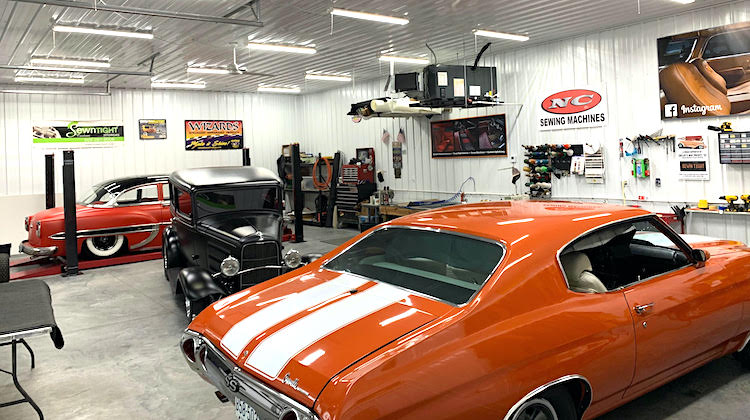
All very good comments I have done most of that forever and yes it is nice when a customer walks into your shop and says to you you have a very clean shop. keep up the good work. thank you for sharing
i also have done most like air lines i also hung kitchen cabinets to store supplies and labeled the doors also hung all my everyday tools on slot walls…but still hard keeping the place clean..thanks for the post
I like the article and the advise…. it is definitely an issue i struggle with…. however i don’t see any materials or foam in the picture of the shop? so how do you manage the clutter from all the different foam types and thicknesses? and not just foam or materials but all the assorted textiles big & small used in the shop?
Hey Oliver. We keep materials and foam ion a hanging rack above our sewing table for what we are working on currently. We would add more hanging racks as needed for easy access and quick visual placement to locate
Good principles of operating an efficient shop, I firmly believe that when a customer or more importantly a POTENTIAL customer walks into a well organized shop , he is more willing to bring in his vehicle, and open up his wallet as well .
One thing I might ad is to do a light clean up and tool organize at the end of each work day.
I schedule about 15 minutes of regular clock time each day before we quit for this. Once I figured this out it made my shop run smooth
and more efficiently every day.
I’ve been in other shops where I watched a guy look for 10 minutes for a tool that should have been in its respective place. That time is just GONE !
It helps me and my technicians with attitude .When you walk into a clean and organized shop the next morning it really sets a good mood for the day as opposed to walking into a War Zone ! Ha Ha !
Again, Great article Shane
Same here Patrick! I have to do this daily or things just get out of control on me!
SHANE AND JESSICA JUST COMPLETED THE INTERIOR ON MY SEDAN. WHEN I DELIVERED THE CAR TO THEM WAS THE FIRST TIME I HAD BEEN TO THEIR SHOP, RIGHT AWAY I NOTICED HOW CLEAN THEIR BUILDING WAS. THAT PUT MY MIND AT EASE RIGHT AWAY.I WAS AND CONTINUED TO BE VERY PLEASED WITH THE JOB THEY DID FOR ME.WOULD I REFER A NEW CUSTOMER TO THEM, YES. THANK YOU.
Excellent article on an issue which is critically important to all businesses. It is particularly important for Trim Shops, as a mess & clutter can spring up in no time flat.
We began this program a decade ago and it has paid off very well over the years, at many levels.
“. . . when potential customers walk into a shop with tons of clutter, dim lighting or a dirty work area, it gives them pause . . . it’s difficult to charge a premium price for work that looks like it’s being performed in a dump. . . ”
Cleaning up and organizing your shop is of course a must for creating the right perception to your customers, and we found that it also raised the bar for the workers, who seem to take more pride in their work when they are in a good, clean, well-lit environment.
Your shop should look at least as good as the work you perform.
If they don’t believe it let them look at your track record, good job
Nowadays, people have become accustomed to seeing cleanliness and orderliness in all of the chain restaurants, auto repair shops etc. they walk into and that makes a shop that is not organized look even worse. However, most of these establishments don’t allow customers into their work areas, they have designated customer spaces. I’ve done work for many restaurants and medical offices and the spaces that only the employees see are a far cry from the spaces the customers see. While organizing the working area is very important for productivity and I might even say that providing a well lit and painted work space can boost employee morale, I think providing a clean, organized and well lit customer area is more important than one might realize. When I had my trim shop, I decided to build a small showroom/office area with tiled floor, track lighting, counter space and display cases. I was amazed at how I was able to raise my prices and with less customer resistance. They assumed a higher price was justified by what they were seeing.
On the subject of storage, I recently downsized my shop space in a new location and my biggest storage problem is, as it has always been, foam storage. Sometimes, I’m tempted to leave my foam shipment vacuum packed so I can just throw it up on a shelf!
Retired Trimmer… Actually it would be great if shops had a waiting area for the customers and a small showroom to keep them away from where the work is actually done. Ck out Carlex Designs in Europe. Another thing the more steps you have to take uses more time also. We kept our old shop organized but in a smaller area. Complete shop was around 900 sq feet with 3 bays.
What you should really be worried about is JERMS, asbestos and other Hazzard s.
This proves likely to come to all Bussiness s in the future. Every sweat drop gets funky overnight…
https://www.spokesman.com/stories/2018/mar/25/bend-hospital-using-ultraviolet-light-to-kill-germ/ .
Interesting article on the Tru-D UV light machine. Hospitals that use these machines may find their rubber parts (hoses, seals etc) degrading at an accelerated rate, but that’s probably a small price to pay for fewer infections and in some cases, saved lives.
Rich
Ran across this in the feed for this month and had to chuckle.. I had a customer come through our 15,000 square foot shop and tell me his wife asked about our work area, there was materials all over the floor, (scraps , patterns, etc). She wondered if they wanted to leave they’re boat there. He told her, if an upholstery shop isn’t a mess, run, cause they aren’t doing any work and there’s a reason why. Have heard old upholstery heads say the same. I’m not saying not to clean up and be a slob, but when your turning and burning projects, there’s no such thing as an upholstery shop worth there wait being compared to a restaurant or medical office. You don’t go to an upholstery shop to eat or have your i area exposed to 12+ years of car seat or boat germs. We do keep a clean and organized reception front for customers, but our back where damage is done is far from neat and tidy like the photos in article. Honestly that looks more like someone’s hobby shop that they kill weekends in. You could not put 8 guys to work in that for 40+ hours a week and maintain that look. It reminds me of the cover girls on magazines that are all greased up and painted over and digitized. Life is not that polished. Really like the principles, getting rid of stuff not used, big step.. I’ve not made enough money yet as an upholstery shop to hire house cleaning, and with deadlines, and work to be done, clean a little and get back after it. Curious about others thoughts. Am I just that far off that I can’t relate, or is this just good filler for not having something closer to reality to write about…